
 The Shenandoah Valley Tour #1 tour has sold out! Signup for the waiting list or, please consider joining us on the Shenandoah Valley Tour #2, May 20-24.
The Shenandoah Valley Tour #1 tour has sold out! Signup for the waiting list or, please consider joining us on the Shenandoah Valley Tour #2, May 20-24.
Event Summary
 he Shenandoah Valley evokes images of Scotch-Irish and German immigrants flowing to the frontier in colonial Virginia and establishing flourishing farms and small homesteads in the beautiful Blue Ridge and Allegheny Mountains and the broad valleys beneath. Travelling up the Valley from Winchester to Bristol, you pass many small towns, a couple small cities, hundreds of farms, with streams, rivers and battlefields scattered about in picturesque places. The town of Lexington is on many people’s lists of “best places to live in the United States.” Historian Bill Potter lives ten miles west of Lexington, Virginia in the hamlet of Rockbridge Baths and will be leading our Shenandoah Valley tour to some of the most important historic sites in the storied “Valley of Virginia.”
he Shenandoah Valley evokes images of Scotch-Irish and German immigrants flowing to the frontier in colonial Virginia and establishing flourishing farms and small homesteads in the beautiful Blue Ridge and Allegheny Mountains and the broad valleys beneath. Travelling up the Valley from Winchester to Bristol, you pass many small towns, a couple small cities, hundreds of farms, with streams, rivers and battlefields scattered about in picturesque places. The town of Lexington is on many people’s lists of “best places to live in the United States.” Historian Bill Potter lives ten miles west of Lexington, Virginia in the hamlet of Rockbridge Baths and will be leading our Shenandoah Valley tour to some of the most important historic sites in the storied “Valley of Virginia.”
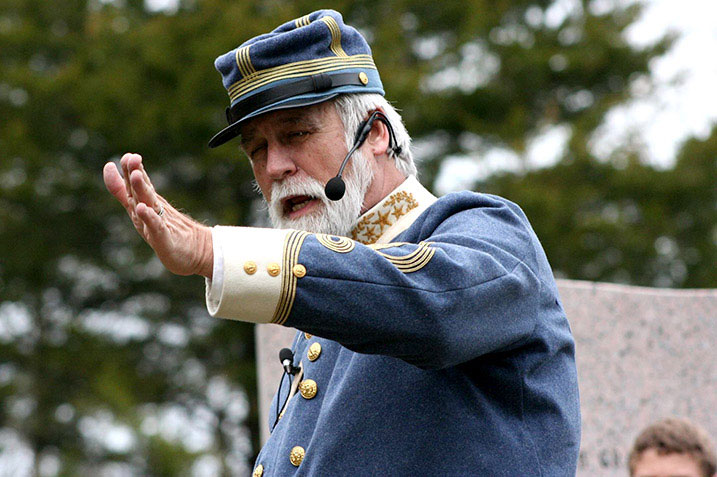
Historian Bill Potter
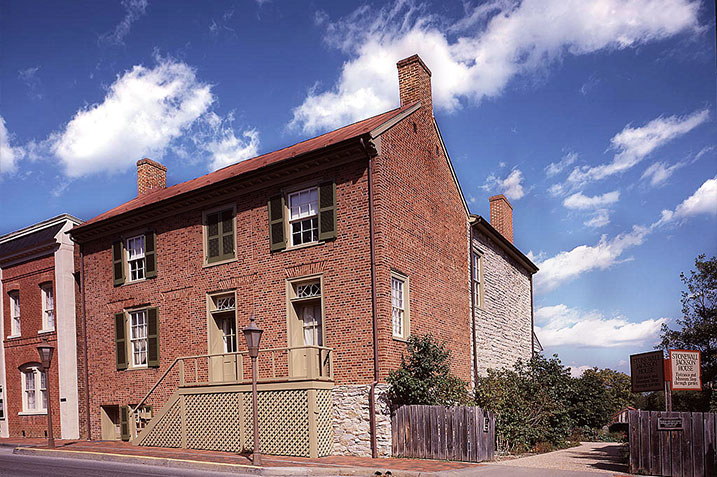
Home of General Stonewall Jackson
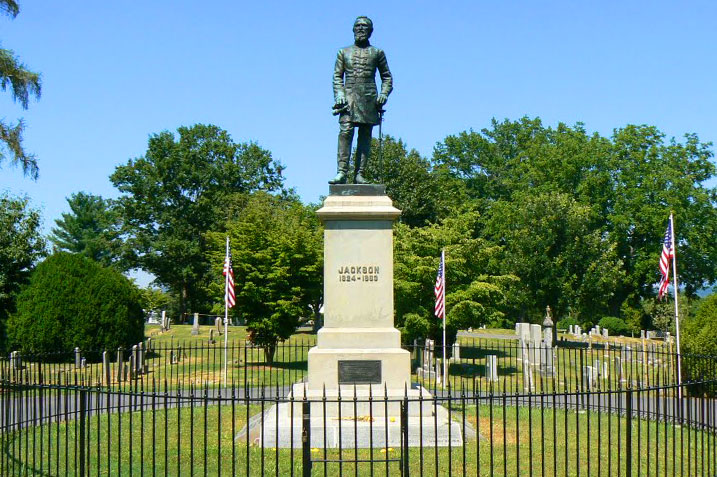
Grave of General Stonewall Jackson
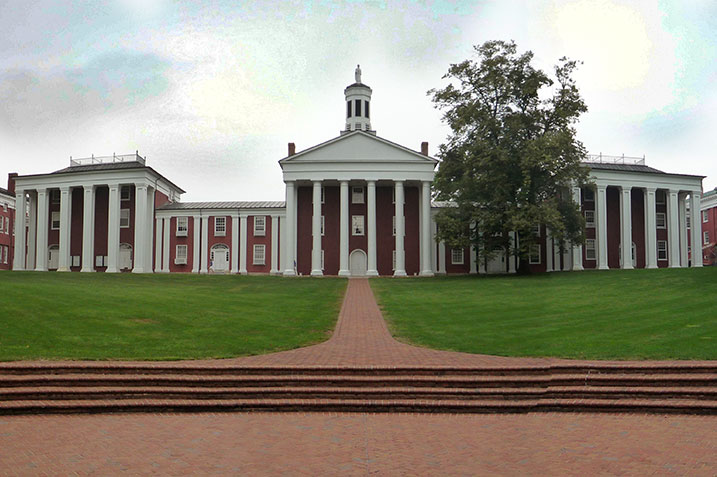
Washington and Lee University
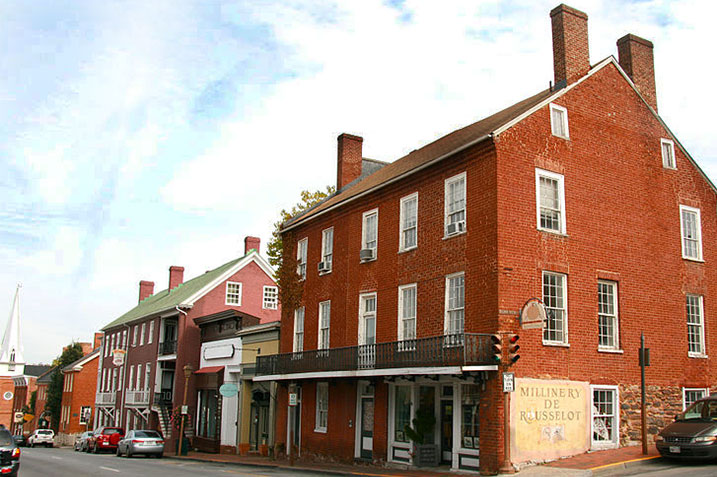
The Town of Lexington, Virginia

Virginia Military Institute

Lee Chapel

“The Old Gilham Place”
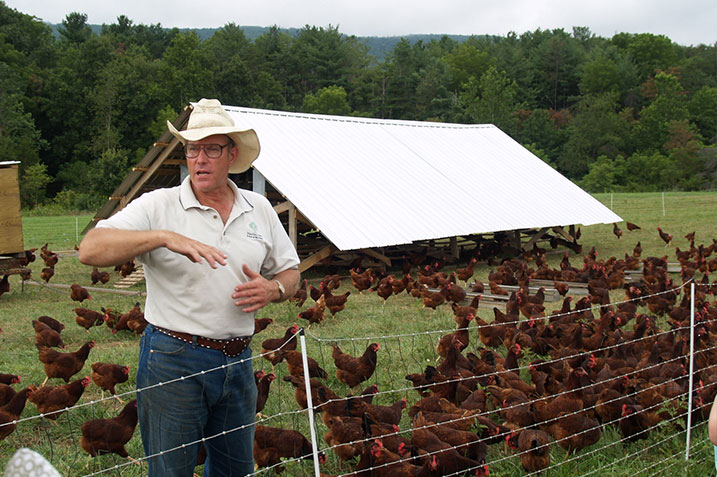
Joel Salatin at Polyface Farms
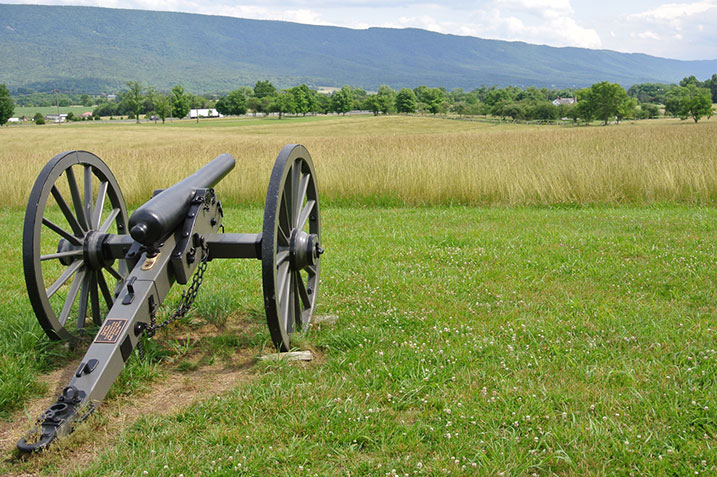
New Market Battlefield
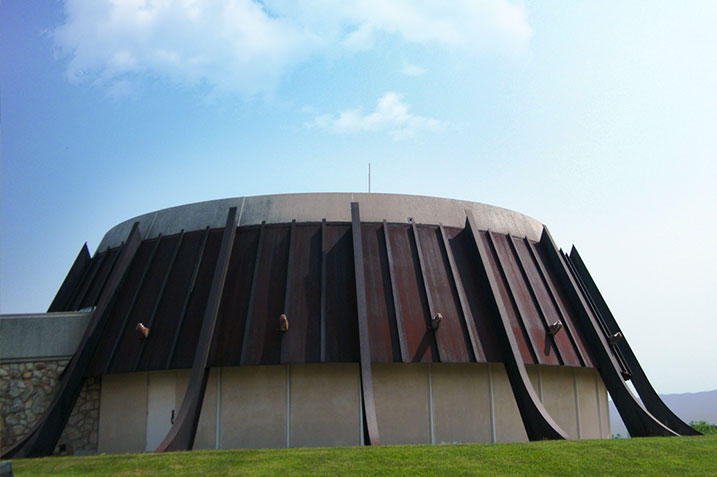
New Market Battlefield Museum
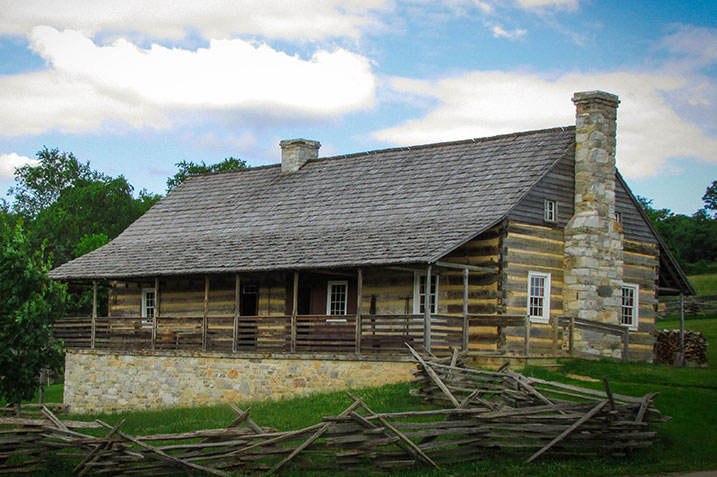
Frontier Culture Museum
Included in This Tour
- All venue admissions and guide fees
- Farm tour and hot dog roast at Polyface Farm with Joel Salatin!
- BBQ Dinner and fellowship at Mr. Potter’s home “The Old Gilham Place”
- 2 Battlefield Tours — New Market and Port Republic
- 153rd Anniversary Battle of New Market Reenactment
- Stonewall Jackson’s Home, Church and Grave
- VMI — Washington and Lee College
- Individual electronic headsets for listening convenience
- Fantastic Christian fellowship
- Souvenir wooden rifle!
- Memories for a lifetime!
- Access to Landmark Events’ special discounted hotel rates
- Study Preparation section
Ticket Pricing Information
 $0 Child (0-5)
$0 Child (0-5) $99 Youth (5-12)
$99 Youth (5-12) $149 Adult (13+)
$149 Adult (13+) $75 Additional Family Members
$75 Additional Family Members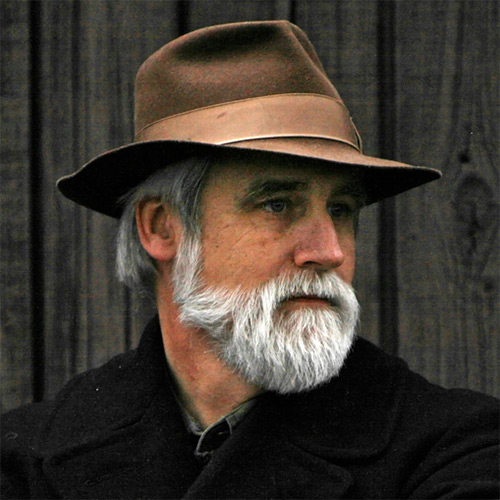
Historian Bill Potter
Historian Bill Potter combines a lifelong study of history with an uncommon ability to captivate audiences of all ages as he traces the providential acts of God throughout the ages. Leading tours of American and European historical sites, he has earned a well-deserved reputation as a gifted communicator, bringing to each event a wealth of experience and knowledge. A seasoned researcher and writer, Mr. Potter possesses a practical knowledge of antiquarian books, documents, and artifacts and has published numerous short books, as well as many articles and book reviews. He and his wife, Leslie, reside in Virginia.
Tour Highlights
The Home of Stonewall Jackson, Lexington, Virginia
Military men still study the campaigns of General Thomas Jackson, “Stonewall.” Americans visit his battlefields, discuss his eccentricities, marvel at his tactics, and wonder at his Christian reputation. Few of them realize that his domestic life as a husband, church school teacher, and deacon reveal the inner man and represent the reality of a life lived for Christ, the inner man about which those who only study his campaigns can theorize or speculate. No place you can visit, of all the Stonewall Jackson historic sites, gives the complete picture of the character and soul of the man like his home in Lexington—the only one he ever owned.

Stonewall Jackson Home
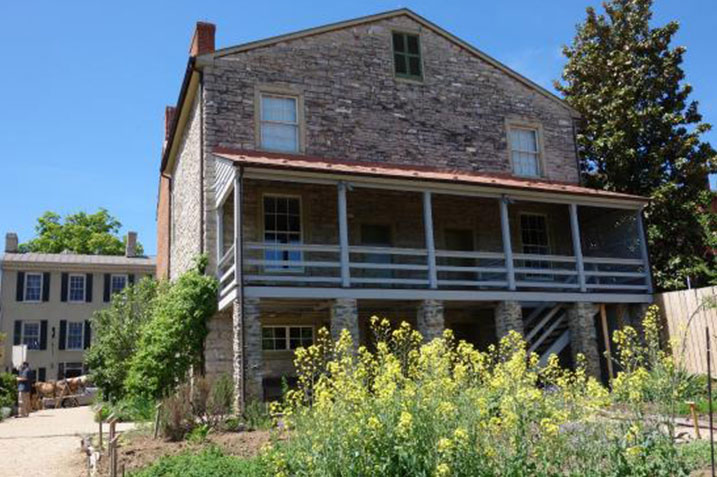
Stonewall Jackson Home, Rear
First Presbyterian Church of Lexington
Stonewall Jackson, in the Providence of God, became a member of this historic church. He taught a “colored Sunday School” and served as a deacon for several years. Bill Potter will teach on Jackson’s role as a churchman and teacher and of his heart for the souls of his friends and neighbors, especially the enslaved population. We shall see the future general as he lived out his Christian life among God’s people, in a church pastored at that time by a great preacher and wise counselor William S. White.
The Gravesite of Stonewall Jackson
He still stands there—in granite, often festooned with wreaths and lemons. He would likely be embarrassed by all the fuss over his monument and memorialization. He attributed all his success to the grace of God and lived all his life for the Glory of God. And that is how we should see him also. How we memorialize our heroes can help us understand who they were and their importance in American history. But we must also see them in the way they understood themselves and how they lived their life, in this case, always with eyes on eternity.
The Virginia Military Institute Museum in Jackson Hall
We will visit this small but highly significant museum on the campus of VMI. The Institute has educated thousands of men for military service, engineering, and business since its founding in 1839. In the 1850s, Major Thomas Jonathan Jackson taught a generation of young men “natural and experimental philosophy and Artillery drill” for the ten years prior to the Civil War. Almost every one of his students served in the War Between the States, and he commanded many of them in battle. This impressive museum contains a full range of Jackson artifacts and tells the story of a military training institute that continues to educate men for many fields of service.
Lee Chapel and General Robert E. Lee’s Mausoleum, Campus of Washington & Lee University, Lexington
Following the surrender of the Army of Northern Virginia at Appomattox Court House in April, 1865, fifty-eight year old Robert E. Lee was faced with the prospect of finding work to support his invalid wife and himself after a forty-one year career as an army officer. He determined he could do the most good training young men of the South to use their gifts and skills to help their families and region recover from the devastating war, and take their place in a United States that had changed in dramatic fashion in the previous decade. He served as President of Washington College in Lexington, Virginia for the last five years of his life, accomplishing in large measure the very goals he established at the beginning. His office is preserved as he left it, a museum has been established to commemorate his life and the chapel represents both George Washington and Lee on the campus of the University that bears their name.
Frontier Culture Museum in Staunton
Many sorts of people settled the Valley and Mountains. Their story is the story of America’s movement westward from the Atlantic seaboard to the Pacific. Recreated homes and the cultural life that went with them are represented in this living history outdoor museum. Farmsteads representing English, Irish, German, and Native American cultures offer a broad perspective on the development of farming in the United States over several centuries.
Polyface Farm, Home of Joel Salatin
While organic, practical family farming was the culture of the 18th and 19th Centuries, such farming today is Counter-Cultural. Polyface farms is “a family owned, multi-generational, pasture-based, beyond organic, local-market farm” in rural Swoope, Virginia, near Staunton. We will visit this renowned farm out of time and meet Joel Salatin, the patriarch of Polyface and internationally known author of books like Everything I Want to Do Is Illegal, The Marvelous Pigness of Pigs and Family-Friendly Farming.
New Market Battlefield and Museum
The Shenandoah Valley in the War Between the States played a vital role in the war effort of both sides. The Valley turnpike (Route 11 today) was macadamized—hard surfaced—so armies could march north or south quickly. Thus it was an avenue of invasion. It was also the breadbasket of the Confederacy. In 1864 excursions by Federal troops came on several occasions. Few troops were available to stop them and the VMI boys were called out to fight, and fight they did at New Market—a battle that became legendary and a powerful symbol of the sacrifice of the “seed corn” of the Confederacy in defense of their homes.
The Battlefield of Port Republic
No tour of the Shenandoah Valley would be complete without a visit to one of Stonewall Jackson’s most famous battlefields, where he divided his forces and met two separate Union armies at the same time. We will visit the part of the battlefield known as “the coaling” where some of the most vicious fighting took place in what proved to be Jackson’s last great victory in the campaign that made him internationally famous. It was also a place where Robert Lewis Dabney, Jackson’s Chief of Staff and a renowned Presbyterian theologian, helped save the day.
The Bill Potter Home (“The Old Gilham Place”)
We will have a picnic and outdoor games at the Potters’ home, a classic Victorian house, nestled in the confines of the Maury River Valley, west of Lexington. With a beautiful and swift Hayes creek on one side, the warm springs that made Rockbridge Baths a 19th Century therapeutic destination on another, a maze of hedges and a picturesque flood plain next to the creek, this should prove to be a unique and enjoyable time of fellowship and learning. If it rains, you will be stuck inside or on the large veranda porch with more than 6,000 books of history, theology, militaria, food and friends.
Event Schedule
Wednesday, May 17
| 8:00am |  |
Meet at Hopkins Green (Corner of W. Nelson St. and S. Jefferson St.) |
| 9:00am |  |
Stonewall Jackson Home / Lexington Presbyterian Church (8 E. Washington St., Lexington / 120 S. Main St., Lexington) |
| 12:15pm |  |
The Gravesite of Stonewall Jackson (314 S. Main St., Lexington) |
| 2:30pm |  |
Lee Chapel at Washington and Lee University (11-17 Letcher Avenue, Lexington) |
| 4:00pm |  |
The Virginia Military Institute Museum in Jackson Hall (415 Letcher Avenue, Lexington) |
Thursday, May 18
| 10:00am | 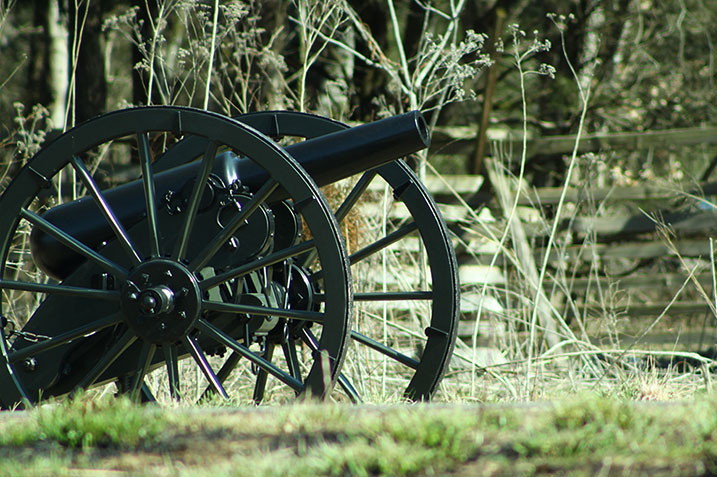 |
Port Republic Battlefield (8700 Water St., Port Republic) From Harrisonburg, take Port Republic Road through Port Republic; turn left on Route 340. Follow 340 for 1.5 miles and turn right on Route 708. Park at the markers in front of the church. |
| 2:00pm |  |
New Market Battlefield and Museum (8895 George Collins Pkwy, New Market, VA 22844) |
| 7:30pm |  |
Lecture with Dr. David Cox, author of The Religious Life of Robert E. Lee and visiting professor of history at Southern Virginia University. Orthodox Pres. Church (2408 Hickory St., Staunton) |
Friday, May 19
| 9:00am |  |
Frontier Culture Museum (1290 Richmond Ave., Staunton, VA 24401) |
| 1:00pm |  |
Polyface Farms (55 Pure Meadows Lane, Swoope, VA 24479) |
| 6:00pm |  |
BBQ Dinner at Bill Potter Home (“The Old Gilham Place”) (4674 Maury River Road, Rock Bridge Baths, VA 24473) |
Saturday, May 20
| 10:00am |  |
Gates Open – 153rd Anniversary Battle of New Market Reenactment (8895 George Collins Pkwy, New Market, VA 22844) Living History of Bushong Farm |
| 11:00am | Artillery Demonstration (spectator area) Lecture: Battle of New Market (museum benches) |
|
| 12:00pm | Cavalry Battle (spectator area) | |
| 2:45pm |  |
Battle of New Market—The First Day (spectator area) |
| 5:00pm |  |
Grounds closed to public |
Accommodations
Sleep Inn Staunton
For your convenience, we have secured a block of rooms at the Sleep Inn in Staunton. The hotel was renovated two years ago, is highly rated on Trip Advisor and is on the other side of the street from the train tracks! Call (540) 887-6500, select option 2 and ask for the Landmark Events block.
$98.00 plus 9.3% tax per room, per night for May 16,17 & 18
$109.00 plus 9.3% tax per room, per night for May 19 & 20
Cut-off date: April 24, 2017, or when rooms run out
This is only a suggestion, and you are free to stay wherever works best for you. There are countless great B&Bs, a couple of historic hotels and lots of chains to choose from.
Note: The tour takes place over graduation weekend for University of Virginia and Mary Baldwin University, so wherever you decide to stay, reserve your rooms soon!

Study Prep
 e do not expect you to read all of these books in preparation for the tour. This is a special selection by historian Bill Potter that can enhance any reading preparation you would undertake. Some of the books mentioned are out of print and hard to find but all are worth reading if you are interested in the topic. There are many other available books on most of these topics; feel free to ask Mr. Potter about them if you have further questions.
e do not expect you to read all of these books in preparation for the tour. This is a special selection by historian Bill Potter that can enhance any reading preparation you would undertake. Some of the books mentioned are out of print and hard to find but all are worth reading if you are interested in the topic. There are many other available books on most of these topics; feel free to ask Mr. Potter about them if you have further questions.
The Commanders, Lee and Jackson
Dabney, Robert Lewis, Life and Campaigns of Stonewall Jackson
Originally published in 1865, this “official” biography by Jackson’s friend and Adjutant General displays the character and Christian faith of Jackson. The military campaigns lack full treatment and sometimes accuracy but every biographer since has had to deal with this intimate portrait. Available in reprint by Sprinkle Publications.
Fishwick, Marshall, Lee After the War: The Greatest Period in the Life of a Great American
The life of General Lee after the war, lesser known but vital to understanding the faith and service to God of General Lee. His heart for the Gospel and for his students is evident throughout this period of his storied life.
Potter, Bill, Beloved Bride: The Letters of Stonewall Jackson to His Wife, 1857-1863
Reprinted letter fragments from Jackson to his wife Mary Anna, within their historical context. They tell the story of a 19th Century Christian marriage. Originally published in various places in Mrs. Jackson’s Life and Letters of Stonewall Jackson. (Vision Forum, 2002)
Robertson, James I., Stonewall Jackson: The Man, The Soldier, The Legend
Published first in 1997, this is still the best overall biography of the great general. Robertson takes Jackson’s faith seriously and shows how it is impossible to understand him without it. Wonderfully written and a labor of love by one of the foremost Civil War historians of the 20th Century.
Robertson, James I., ed. Stonewall Jackson’s Book of Maxims
Dr. Robertson found these maxims in an obscure library while researching his biography of Jackson. Lost to history until then, we find that General Jackson had kept a private memoranda book in which he jotted down principles of living and self-improvement for many years. (Cumberland House, 2002)
Wilkins, J. Steven, All Things for Good: The Steadfast Fidelity of Stonewall Jackson
A brief history of his life and the lessons we can draw from Jackson’s fidelity to Scripture and Christian service. An old-fashioned moral history by a 20th Century pastor and historian. Very useful as an introduction to Jackson for younger people. (Cumberland House, 2004)
Wilkins, J. Steven, Call of Duty: The Sterling Nobility of Robert E. LeeA
brief biography and lessons from the life and character of the Commander of the Confederate Army. A good introduction to the life of Lee, especially suitable for young men.
Williams, Richard G., Jr., Stonewall Jackson: The Black Man’s Friend
Williams shows the compassion Jackson had for the spiritual welfare of slaves. It is the story of his colored Sunday School and the glorious results among people who were converted to Christ while in bondage and built churches and carried the Gospel to future generations after the Civil War.
Battles
Davis, William C., The Battle of New Market
The standard account of the battle of New Market in 1864. The VMI cadets and all the other regiments, both north and south came together outside a strategic village and turned the tide for the Confederacy in the Valley for a short while.
Krick, Robert K., Conquering the Valley: Stonewall Jackson at Port Republic
Written by one of the premier historians of southern military history, Krick’s definitive account of Jackson’s decisive repulse of the Union invasion of the Valley in 1862 brings alive the fierceness of the fight, the near capture of Jackson, and demonstrates why Port Republic was one of the most important battles of the War.
Patchan, Scott C., Shenandoah Summer: The 1864 Valley Campaign
The campaign in the Valley in July and August of 1864 by Confederate General Jubal Early began with success and elan, and ended in bitter defeat and recrimination. In the he resultant backlash, the Shenandoah Valley was burned by General Sheridan’s Federal Army from range to range so thoroughly that “a crow crossing the Valley will have to carry provisions.”
Svenson, Peter, Battlefield: Farming a Civil War Battlefield
An unusual and quirky first-person account of a 20th-Century farmer from “up North” who bought a farm in the Shenandoah Valley and discovered that it lay in the middle of the unpreserved Cross Keys Battlefield, one of Stonewall Jackson’s Valley battles. This is his story of how he farmed the site while researching the battle in the archives and by talking with local people. How should a battlefield be preserved, or should it?
Tanner, Robert G., Stonewall in the Valley: Thomas J. “Stonewall” Jackson’s Shenandoah Valley Campaign, Spring 1862
A sparkling narrative of Jackson’s Valley Campaign, which made him a legend and secured his status as a brilliant strategist and tactician in world military history.
Personal Reminiscences and Biographies of Valley People in the Army and at Home
Bean, W. G., The Liberty Hall Volunteers: Stonewall Jackson’s College Boys
When the Civil War began fifty-six of the boys of Company I of the 4th Virginia Infantry, enlisted en masse from Washington College in Lexington. At least one-fourth of them were studying for the Gospel ministry. The ladies of Falling Springs Presbyterian Church presented them with a flag that had the sewn inscription pro aris et focus (for alter and home). In the course of the war, the company would suffer 128% casualties.
Bean, W. G., Sandie Pendleton: Stonewall’s Man
In some ways Pendleton became the son that Jackson never had. One of the most competent Chiefs of Staff that a general could want. Young Pendleton served Jackson till his commander’s death. Sandie was killed in battle in the 1864 Valley Campaign, a devout Christian soldier to the last. He was the son of the Pastor of the Episcopal Church in Lexington.
Cockrell, Monroe G., ed., Gunner with Stonewall: The Reminiscences of William Thomas Poague
Poague was a fellow-member of the Church in Lexington with Thomas Jackson. He rose to the rank of Lt. Col. Of Artillery in the Army of Northern Virginia. He became an elder in the church after the war. This memoir was written for his children in 1903 and is a Confederate classic.
Colt, Margaretta Barton, Defend the Valley: A Shenandoah Family in the Civil War
A descendant of the Barton-Jones clan in the Shenandoah Valley, this book was a labor of love over seven years of research. A clear and engaging writer, the author tells the story of a family that sent eleven sons to battle. David McCullough called this book “a wonderful event.” Robert Krick described it as a “sad, brave tale of a family in the midst of that anguish and chaos—an instant classic.” And so it is.
Heatwole, John L., Chrisman’s Boy Company: A History of the Civil War Service of Company A, 3rd Battalion, Virginia Mounted Reserves
This book relates the heroic service of a company of seventeen year-old cavalrymen from the Shenandoah Valley in the last desperate year of the Civil War. Too young for regular service, this home-guard unit tried to stop the burning of the Valley.
MacDonald, Cornelia Peake, A Woman’s Civil War: A Diary, with Reminiscences of the War, from March, 1862
The story of a Christian mother with ten children, husband and three sons at war, with two married daughters in a town that changed hands some 25 times in the course of the Civil War. She has to keep two rambunctious sons, a small daughters and a lap baby alive when there is little food and no money. This is my favorite woman’s account of life in the Shenandoah Valley in the most desperate circumstances. She ends up leaving her home in Winchester and ends the war in Lexington. An incredible story of faith and fortitude. (If you find the edition I have, edited by Minrose Gwin at the University of Wisconsin, be rest assured Cornelia was not a proto-feminist. . .)
Turner, Charles W., Ted Barclay, Liberty Hall Volunteers: Letters from the Stonewall Brigade
In these letters you see the smoke and hear the din of battle and agonize with him over his spiritual struggles. Although raised in the church he was uncommitted to Christ till the middle of the Civil War. In God’s providence, Ted survived the war and took his place in Lexington as devoted churchman for forty-six years and ardent Christian as he raised his six children and served his town and community as a model farmer and businessman.
Key People
Archibald Alexander
Cornelia Peake MacDonald
Samuel Davies
Sandie Pendleton
William S. White
Moses Ezekiel
Thomas J. “Stonewall” Jackson
Richard Ewell
Mary Anna Morrison Jackson
J. William Jones
Robert E. Lee
Lloyd Sprinkle
Mary Anna Custis Lee
Joel Salatin
Key Issues
The War for Southern Independence 1861-1865
- Why did 11 states secede, especially Virginia?
- Causes, Strategies, Handicaps
- Importance of the Shenandoah Valley
Living a Christian Life in the Midst of War
- The Life of Stonewall Jackson as example
- The Life of Robert E. Lee as example
The historical importance of farming in Virginia and America
How Providence brought the Scots-Irish into American history
- Religious persecution and economic dislocation
- The cultural heritage of Reformed Christianity
To what extent should we defend causes which have been lost to history?
Image Credits: 1 Stonewall Jackson House (Wikipedia.org – Carol M. Highsmith); 2 Grave of Stonewall Jackson (Panoramio.com – Turfdude96); 3 Washington and Lee University (Wikipedia.org – Bobak Ha’Eri); 4 Main Street Lexington, VA (Wikipedia.org – Cville dog); 5 VMI Cannons (Wikipedia.org – koocbor); 6 Robert E. Lee’s Chapel (Panoramio.com – Turfdude96); 7 Joel Salatin (Wikipedia.org – Nick V.); 8 Field of Lost Shoes (Wikipedia.org – Wilson44691); 9 Virginia Museum of the Civil War (Wikipedia.org – Sarah Stierch); 10 Frontier Culture Museum (FrontierMuseum.org)

